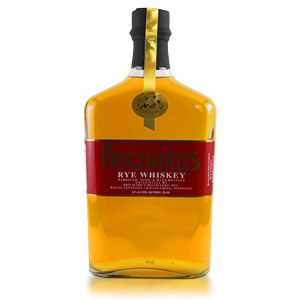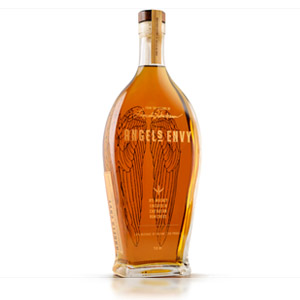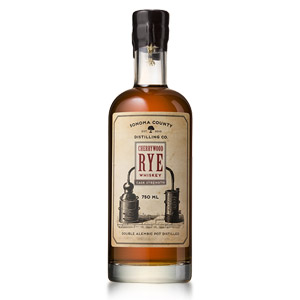Talk about taking a shtick and running with it, Dutch distiller Zuidam’s Millstone 100 rye whisky is made from 100% rye grain (49% malted, 51% unmalted) distilled in small copper pot stills, and then is aged for 100 months (8 years, 4 months) in new American oak barrels, and then bottled at 100 proof (50% ABV). The marketing slogans almost write themselves.
The distillery was established in 1976 by Master Distiller Fred van Zuidam. A truly family business, the packaging was created by Fred’s wife, and the distillery operations are now overseen by his two sons, Patrick and Gilbert. Zuidam Distillers also makes gin, genever, rum, liqueur, and a line of Millstone whiskies including several malt whiskies.
I tasted a sample of Millstone 100 rye that was collected from bottle in April of 2015 as part of a Flaviar sample pack (Ryevolution).
Nose: Very shy, even with a rest in the glass. I can tease out a spirity note of graham cracker, with attendant cinnamon and clove. As it warms up, there is a little cracked black peppercorn and hot roasted almonds.
Palate: Syrupy body. Moderate tongue burn. More graham cracker, a spice cabinet array (primarily cinnamon), and only a faint cereal sweetness, reminding me of Cinnamon Toast Crunch breakfast cereal, only not as sugary.
Finish: Medium-long, warming. No bitterness, just a fading slideshow of spices (cinnamon, nutmeg, clove, anise, mace, etc.).
With Water: Water has no effect on the nose, alas, or anywhere else. Water is fully optional with this.
Overall: A pretty standard well-made middle-aged rye. The usual suspects (spice notes) are in attendance, although they are so muted on the aroma that not much at all greets the nose. The body is unusually viscous and the finish unusually long, but other than that, you could swap this out with any other not-too-young rye without anyone noticing.
I marked this “Try before Buy” because of the price-quality ratio (going by EU prices). That said, if you can find this whisky for significantly less, this would make an excellent “daily drinker” rye, good for both cocktails and sipping neat.









Scotchnoob, was it very common for European distilleries to make rye whiskies before this modern American rye renaissance? Or is it just an attempt to capitalize on the current boom? I’m just curious more than anything else.
Hi Andrew, I don’t have a lot of solid information on the topic, but I can tell you that while rye was widely cultivated as a bread grain in Europe during the last 500 years, it wasn’t commonly used for distillation. Probably this was due to its propensity to turn into a viscous gel when mashed. Rye is notorious for being a difficult grain to distill, and the wide availability of barley (for beer) likely made that a better choice for early European distillers. Still, some distillers will use anything they can get their hands on:
“Originally, all Scotch Whisky was made from malted barley however, commercial distilleries began introducing Whisky made from wheat and rye in the late 18th century.” (MacLean, 2009)
Is this available in the US? I’m in CA, but not one of the bigger cities, so it might well be around and I just haven’t seen it.
It is widely available here in Canada. Especially in Alberta. Come on up.